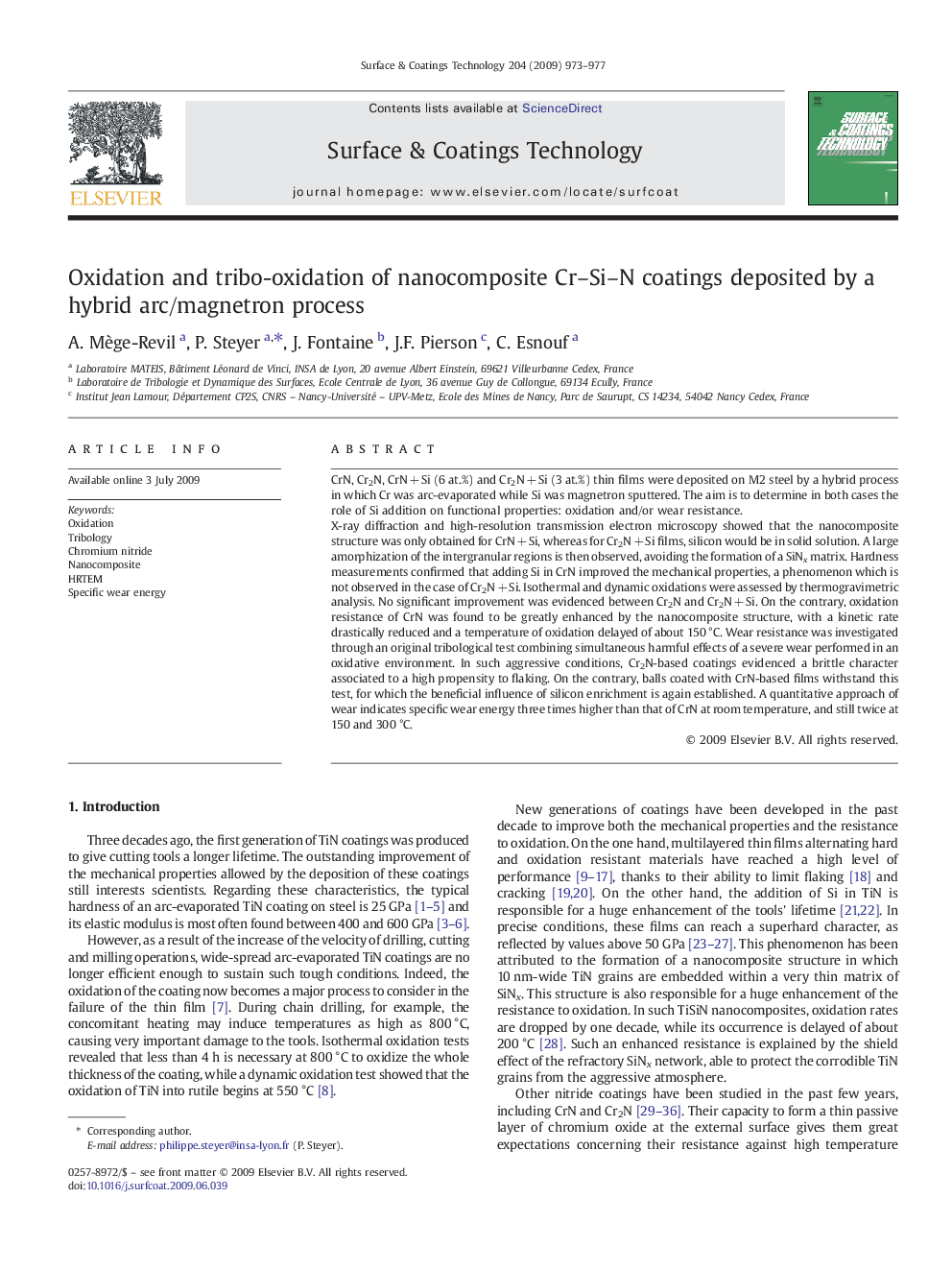| Article ID | Journal | Published Year | Pages | File Type |
|---|---|---|---|---|
| 1660355 | Surface and Coatings Technology | 2009 | 5 Pages |
Abstract
X-ray diffraction and high-resolution transmission electron microscopy showed that the nanocomposite structure was only obtained for CrN + Si, whereas for Cr2N + Si films, silicon would be in solid solution. A large amorphization of the intergranular regions is then observed, avoiding the formation of a SiNx matrix. Hardness measurements confirmed that adding Si in CrN improved the mechanical properties, a phenomenon which is not observed in the case of Cr2N + Si. Isothermal and dynamic oxidations were assessed by thermogravimetric analysis. No significant improvement was evidenced between Cr2N and Cr2N + Si. On the contrary, oxidation resistance of CrN was found to be greatly enhanced by the nanocomposite structure, with a kinetic rate drastically reduced and a temperature of oxidation delayed of about 150 °C. Wear resistance was investigated through an original tribological test combining simultaneous harmful effects of a severe wear performed in an oxidative environment. In such aggressive conditions, Cr2N-based coatings evidenced a brittle character associated to a high propensity to flaking. On the contrary, balls coated with CrN-based films withstand this test, for which the beneficial influence of silicon enrichment is again established. A quantitative approach of wear indicates specific wear energy three times higher than that of CrN at room temperature, and still twice at 150 and 300 °C.
Related Topics
Physical Sciences and Engineering
Materials Science
Nanotechnology
Authors
A. Mège-Revil, P. Steyer, J. Fontaine, J.F. Pierson, C. Esnouf,
